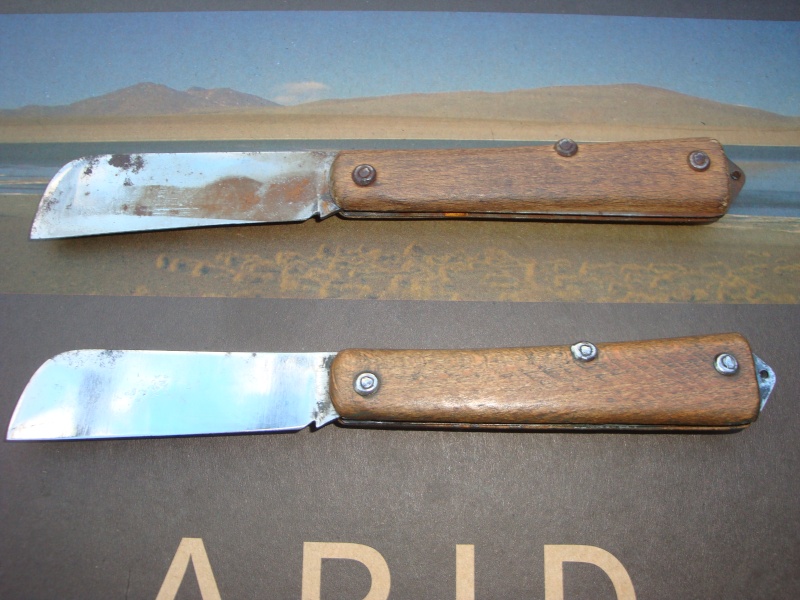I served in the Coast Guard for 20 years. They did not issue knives in general, but if you worked on deck and handled lines it was good practice to have a good sharp knife. Sheath knives weren't allowed but folders were ok. I carried a Buck 110. However if a knife was need as a tool they were available. I have several electrician's knives from my service.

I have a K-Bar from WWII that was a Navy issued knife (it's in pretty bad shape so I won't post a pic.) That I bought at an estate sale, and I recently found a Army issue utility knife made by Camillus in 1981.

Generally speaking these are good knives for the purpose intended. I am sure there are better ones on the civilian market ( like the Buck 110) but they will serve (pun intended).

I have a K-Bar from WWII that was a Navy issued knife (it's in pretty bad shape so I won't post a pic.) That I bought at an estate sale, and I recently found a Army issue utility knife made by Camillus in 1981.

Generally speaking these are good knives for the purpose intended. I am sure there are better ones on the civilian market ( like the Buck 110) but they will serve (pun intended).













